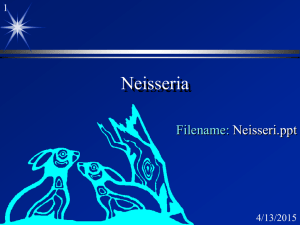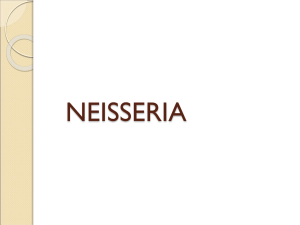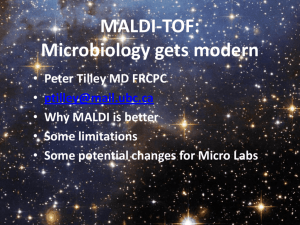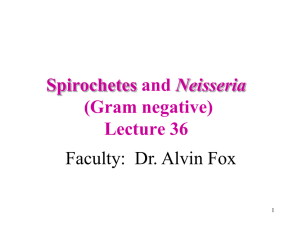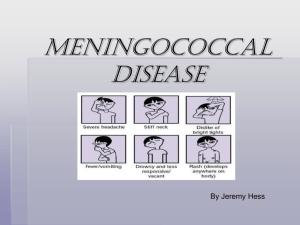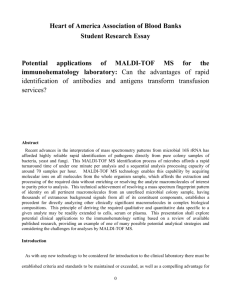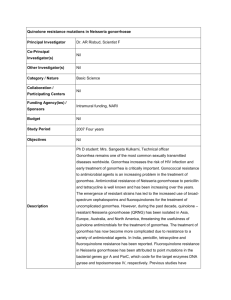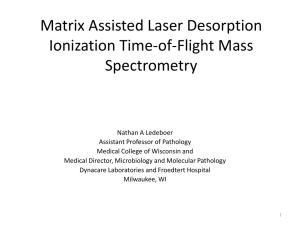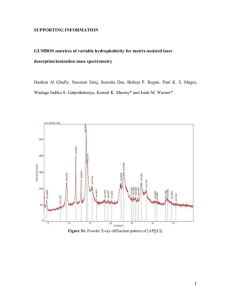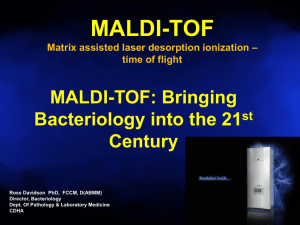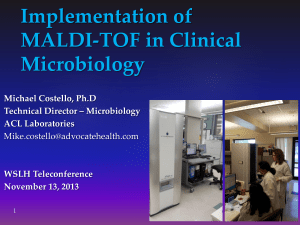Comparison of MALDI-ToF, NAATS and
advertisement
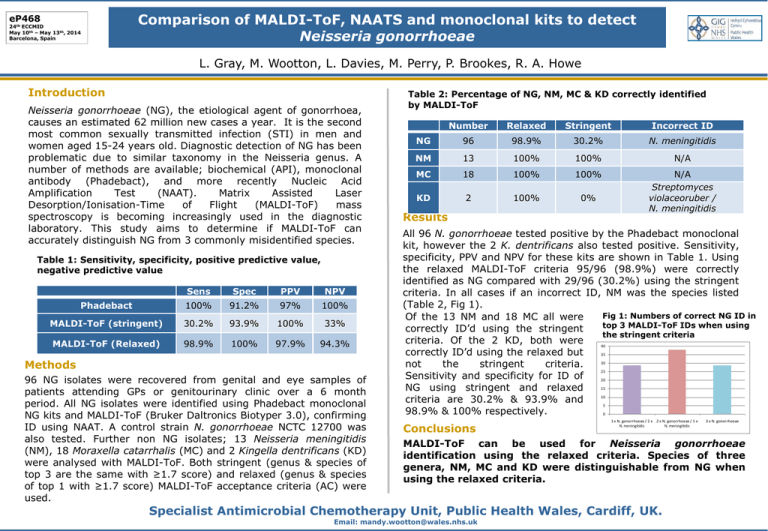
eP468 24th ECCMID May 10th – May 13th, 2014 Barcelona, Spain Comparison of MALDI-ToF, NAATS and monoclonal kits to detect Neisseria gonorrhoeae L. Gray, M. Wootton, L. Davies, M. Perry, P. Brookes, R. A. Howe Introduction Neisseria gonorrhoeae (NG), the etiological agent of gonorrhoea, causes an estimated 62 million new cases a year. It is the second most common sexually transmitted infection (STI) in men and women aged 15-24 years old. Diagnostic detection of NG has been problematic due to similar taxonomy in the Neisseria genus. A number of methods are available; biochemical (API), monoclonal antibody (Phadebact), and more recently Nucleic Acid Amplification Test (NAAT). Matrix Assisted Laser Desorption/Ionisation-Time of Flight (MALDI-ToF) mass spectroscopy is becoming increasingly used in the diagnostic laboratory. This study aims to determine if MALDI-ToF can accurately distinguish NG from 3 commonly misidentified species. Table 1: Sensitivity, specificity, positive predictive value, negative predictive value Sens Spec PPV NPV Phadebact 100% 91.2% 97% 100% MALDI-ToF (stringent) 30.2% 93.9% 100% 33% MALDI-ToF (Relaxed) 98.9% 100% 97.9% 94.3% Methods 96 NG isolates were recovered from genital and eye samples of patients attending GPs or genitourinary clinic over a 6 month period. All NG isolates were identified using Phadebact monoclonal NG kits and MALDI-ToF (Bruker Daltronics Biotyper 3.0), confirming ID using NAAT. A control strain N. gonorrhoeae NCTC 12700 was also tested. Further non NG isolates; 13 Neisseria meningitidis (NM), 18 Moraxella catarrhalis (MC) and 2 Kingella dentrificans (KD) were analysed with MALDI-ToF. Both stringent (genus & species of top 3 are the same with ≥1.7 score) and relaxed (genus & species of top 1 with ≥1.7 score) MALDI-ToF acceptance criteria (AC) were used. Table 2: Percentage of NG, NM, MC & KD correctly identified by MALDI-ToF Number Relaxed Stringent Incorrect ID NG 96 98.9% 30.2% N. meningitidis NM 13 100% 100% N/A MC 18 100% 100% KD 2 100% 0% N/A Streptomyces violaceoruber / N. meningitidis Results All 96 N. gonorrhoeae tested positive by the Phadebact monoclonal kit, however the 2 K. dentrificans also tested positive. Sensitivity, specificity, PPV and NPV for these kits are shown in Table 1. Using the relaxed MALDI-ToF criteria 95/96 (98.9%) were correctly identified as NG compared with 29/96 (30.2%) using the stringent criteria. In all cases if an incorrect ID, NM was the species listed (Table 2, Fig 1). Fig 1: Numbers of correct NG ID in Of the 13 NM and 18 MC all were top 3 MALDI-ToF IDs when using correctly ID’d using the stringent the stringent criteria criteria. Of the 2 KD, both were 40 correctly ID’d using the relaxed but 35 30 not the stringent criteria. 25 Sensitivity and specificity for ID of 20 15 NG using stringent and relaxed 10 criteria are 30.2% & 93.9% and 5 98.9% & 100% respectively. 0 Conclusions 1 x N. gonorrhoeae / 2 x 2 x N. gonorrhoeae / 1 x N. meningitidis N. meningitidis 3 x N. gonorrhoeae MALDI-ToF can be used for Neisseria gonorrhoeae identification using the relaxed criteria. Species of three genera, NM, MC and KD were distinguishable from NG when using the relaxed criteria. Specialist Antimicrobial Chemotherapy Unit, Public Health Wales, Cardiff, UK. Email: mandy.wootton@wales.nhs.uk
